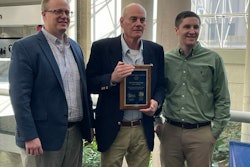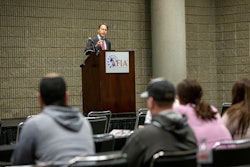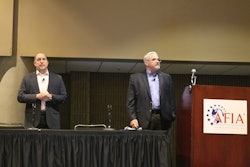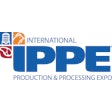
The International Organization for Standardization (ISO) is inching closer to finalizing standards for feed processing and food processing machinery.
In 2014, China established the ISO Technical Committee (TC) 293 to provide unified guidelines for equipment manufacturers across the world. Gary Huddleston, director of manufacturing and regulatory affairs for the American Feed Industry Association (AFIA), chairs the U.S. technical advisory group for ISO TC-293.
At an International Production and Processing Expo (IPPE) TECHTalk on Tuesday, January 25, Huddleston introduced Scott Cedarquist of the American Society of Biological Engineers (ASABE) to share the importance of creating such standards and give an update on the committee’s progress over the last year.
“The benefits of standards are that they allow for [component] interchangeability and they can reduce the number of components,” Cedarquist said.
“They ensure safety requirements are entered into the design of equipment, they align performance requirements for testing and aid in the development of codes and legislation, and they're used often for educational materials in the absence of textbooks.”
Standards can facilitate international trade when multiple nations agree on them. While different standards organizations operate across Canada, the U.S. and in Europe, ISO is an independent, non-governmental international organization with a membership of 167 national standards bodies.
“About 93% of global trade is impacted by these standards and often the technical regulations reference standards,” Cedarquist said. “When these standards can show up in specs and contracts, you need to be aware of them if you want to export your machinery. Keep tabs on what's going on, so you don't get caught unaware of what's in these documents.”
Over the last year, ISO TC-293 has focused on three main areas: vocabulary, safety and hygiene. The committee is still defining 39 vocabulary terms, down from the original 900 terms proposed by China.
Cedarquist said it will be another two to three years before ISO TC-293 standards are published, but in the meantime, U.S. equipment manufacturers can get involved in the process by joining a TAG.
“In the U.S., [we form a committee] to develop the country's position, what we call a technical advisory group or TAG,” Cedarquist said. “You can be a voting member or an observing member.
"I would encourage [equipment manufacturers] to become involved so you can keep track of [ISO TC-293] and not be surprised by industry standards referenced in contracts for equipment you want to export and sell around the world.”


















